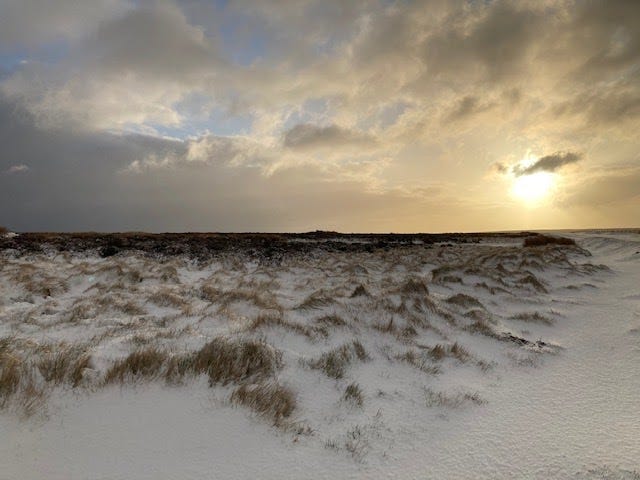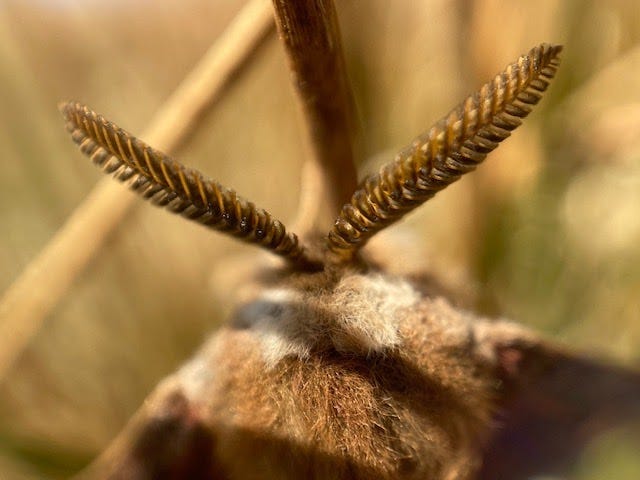A creative season at DARP
Every Monday morning we will publish a newsletter documenting life at DARP through a different resident. This week is Amy Corcoran. Amy is an artist and researcher working primarily in sound, moving image and photography, and whose work centres on ecological themes and our relationship with the more-than-human world. You can find her on Instagram at @turquoiselily and on her website, amycorcoran.xyz.
Myself and my partner, Andy, arrived at DARP only days after the world welcomed in 2021. Now, after four months away in rural Derbyshire, we are packing down our studio and preparing to head back to London, just as the UK is opening up once more from lockdown.
There’s a tendency when leaving somewhere laden with so much promise and expectation to berate oneself for not making the most of the time and not achieving quite ‘enough’. In an attempt to counter those feelings, I am taking this moment to recognise the work I have produced during mine and Andy’s time at DARP, and the ways in which my knowledge and practice is expanding as a result of this unique moment.
Initially, Andy and I worked to finish Stronger than Glass, a short film we produced based around my experiences of grief. The film was intended as a meditation on fragility and endurance, on rebuilding following tragedy, and on reverence for the past without allowing it to define you. It was an acknowledgement of grief, an affirmation of love, and an act of determination, and was selected for Glass, Meet the Future 2021, a film festival promoting new films directed by female identified and non-binary filmmakers using glass as the predominant feature.
We also finalised another short film, Oxygenate, which brings viewers into close relation with the forest floor, where millions of microorganisms make use of oxygen. We are in relationship with all these beings, though we risk their lives as we prioritise our own oxygen use over theirs. Oxygenate aims to stimulate reflection on our place within this vast ecological web, and greater appreciation for the beings we rely on for our survival.
This marks the first of a series of short films we are producing, for which we are currently collecting footage, that focus on the ways the natural world interacts with our bodies and the very tangible need we have for healthy ecosystems. Filming has taken us across Derbyshire, and regularly into the Peak District. Twice we have watched the sun rise over that strange wild landscape, one time waking up to find the ground covered in snow, providing a surreal experience I’ll never forget.
Working on a totally different scale to these wide vistas, during these months I have been developing a series of ultra close-up photos of non-human beings, entitled Miniature Worlds. The Covid-19 pandemic has demonstrated a multitude of things, including the need for many of us to slow down and reassess our relationship with the world around us. Miniature Worlds focuses on the smallest natural entities to celebrate their otherworldiness and intricacies, andto encourage greater appreciation forthe complexity of our planet's ecosystems and the necessity of maintaining their balance, for our well-being and that of other species. This is critical in the current moment, where the future of the planet has been rendered precarious as a result of human activity.
Selected images from the series are part of a digital exhibition, Earth Patterns, and will be at Fronteer Gallery, Sheffield from 12th May. Andy and I have also just been awarded a grant to turn Miniature Worlds imagery into a newspaper for the Camberwell Arts Festival. Local residents will be invited to transform their front windows into interactive gallery spaces by removing tear sheets from the newspaper. These pages will also contain QR Codes directing participants to a webpage that plays birdsong - proven to reduce stress and promote feelings of well-being- thus filling the urban space with sounds of wildlife, and demonstrating its absence from much of our lives.
Personal projects have also included creating a soundscape for a collaborative work entitled Flow, Interrupted. Working with scientist, Sophie Evison, myself and two other artists, Amy Bonsor and Yas Crawford, produced a piece that represents processes central to healthy honey bee hives: foraging, communication, and role differentiation. Subsequent disruptions to these patterns symbolise the threats of pesticides, which can ultimately result in a breaking down of hive functioning. Flow, Interrupted is being exhibited online as part of Creative Reactions, the science-meets-arts branch of Pint of Science, a global science festival. My sound piece, along with two earlier sound works, is now also part of Surmise Collective’s Without Visual exhibition.
These four months have also allowed me to develop projects for realisation later in 2021, including an extended sound piece of melting ice for Terror on Tour, images in first issue of Seaborne Magazine, an exhibition based around climate action and visual culture, a conference focused on ecological death, a project on community gardening and access to land, and participation in a wildlife exhibition in Orkney. I have also been taking time to experiment, particularly around camera-less photography. For example, with cyanotypes, including with Miniature Worlds images.
The other residents at DARP have also taught me a great deal, for which I am very grateful. Continuing with photographic practices, Ella Yolande showed me how to create phytograms, and we have produced beautiful, soft images of plant life from the residency’s lush gardens.
Ella and I have also been learning to dye fabric with natural materials, working with ferns, avocados, red cabbage, nettles, turmeric and forsythia flowers. This has been a wonderful journey of discovery, one in which I hope to develop further as strands of my practice continue to meld and unfurl.
Additionally, Chris Coward very generously gave up his afternoon to give me my first ever lesson in oil painting, a medium I’ve always wanted to try - I will treasure my dodgy paintings of jars and bowls forever. I have also learned a lot from Sean Roy Parker, who led a foraging workshop in the gardens, showed me how to make pinhole cameras (from old Bouillon tins) and whose wormery I helped set up. These experiences have been rewarding in their own right but will doubtless go on to inform my creative thinking, as my artistic practice flows through and within my daily practices and direct engagement with the natural world.DARP has provided a haven for me to more deeply connect with the natural world, and thus to develop my engagement with ecologically-minded creative practices, including through learning from others.







